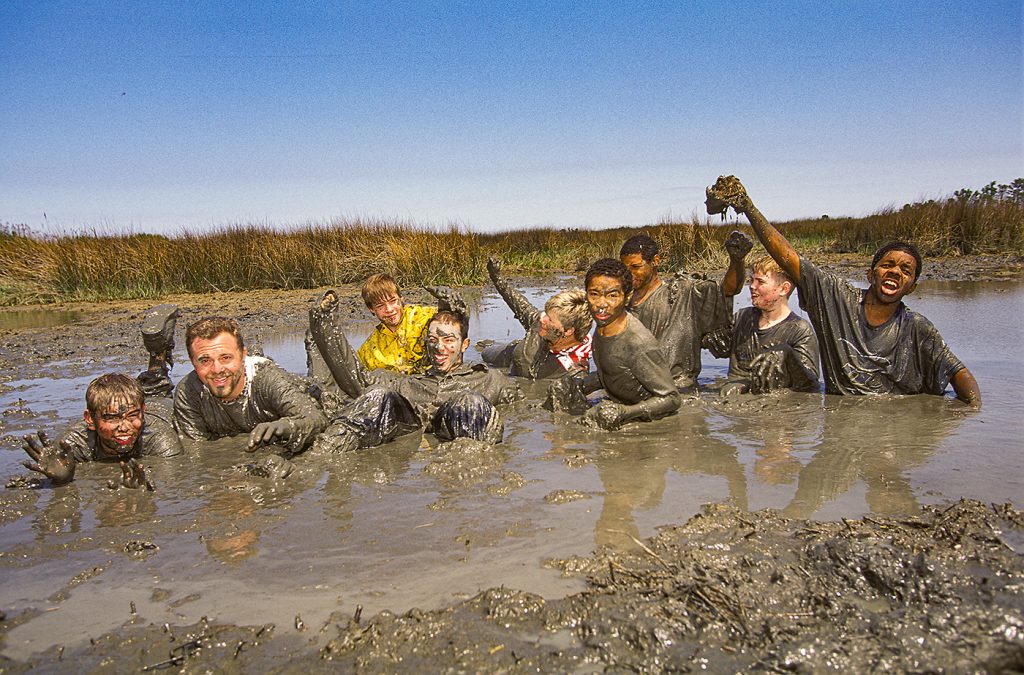After three years in the literal middle of Chesapeake Bay, doing outdoor education from Smith Island for the Chesapeake Bay Foundation during the late 1980s, I decided that if forced to sum up the experience in a word, that word would be “mud.” “Hard to forget this place once you get mud ’tween your toes,” the islanders would say. Muddy shoes, muddy clothes, muddy canoes; mud so thick and black and all-encompassing I could only see my students’ eyeballs after one memorable wallow in the marsh.
But in our over-sanitized, divorced-from-nature modern society, mud has an image problem: “his name is mud,” “muddied her reputation,” “dragged through the mud.”
So I come to speak some words for mud and muddiness, to give a shout for ooze and slime and muck. It is a noble substance, emblematic of our great estuary’s essential shallowness; the bay’s genius stemming in no small measure from its muddy bottom lying ever so close to its top.
The bay’s essential shallowness—only 20-some feet deep on a...
To view the rest of this article, you must log in. If you do not have an account with us, please subscribe here.

